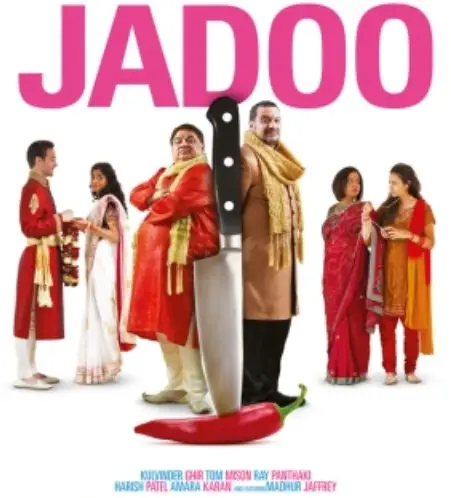Home » Posts tagged 'curry'
Tag Archives: curry
Film Review: Jadoo (Kings of Curry 2013)


Director /screenplay : Amit Gupta
Foodie Expert Madhur Jaffrey
Country: UK
Film Rating: 6/10
Foodie Rating: 8/10
Without the risk of trying to curry favour this is a delightfully enjoyable foodie rom-com. Set in the UK city of Leicester cross-cultural expectations collide with family conflicts and culinary rivalries at the height of the festival of Holi, so colourful confrontations ensue in more ways than one.
Mark (Tom Mison) and Shalini (Amara Karan) want to get married but Shalini is worried about getting approval from her father, especially as they come from different cultural backgrounds. Shalini heads back home to Leicester to inform her dad Raja (Harish Patel) of the proposed nuptials. No need to worry. Her father is delighted.
The only problem is that she would like to invite her uncle to the wedding. And her father hasn’t spoken to his brother for a long, long time. Raja and Jagi (Kulvinder Ghir) are rival brothers with rival restaurants, their sibling squabbles revolving around an argument that resulted in the splitting of their late mother’s recipe book twenty years ago. And there seems to be no possibility of reconciliation.
Just after the colourful festival of Holi, a high-profile curry cooking competition is due to take place. It is hosted and judged by Indian culinary expert and actress Madhur Jaffrey. To be crowned King of Curry in this contest the winning team must provide the best starter and main-course combination.
One of the brothers is a regal starter genius whilst the other is a main course diva. Will family feuding decide to join forces not only for premium King of Curry success? And will Shalini mange to persuade her uncle to resolve their differences and prepare the perfect wedding banquet for her and her spice-savouring spouse to be?
Leicester, as well as being famous as the city where the remains of King Richard III were found in a car park, is one of the best places to eat Indian cuisine in the country. Of course, there is plenty of food on offer in this film with much of its preparation on show too.
And while the competition is the catalyst for reconciliation, the love lies with the preparation of the meals, demonstrating the importance of food in family life. Rather like in Ang Lee’s Eat Drink Man Woman when the father cooks food for his daughter and she appraises it like a critic.
Jadoo also highlights some of the cultural elements of the local community particularly a sequence featuring Holi, the fabulous Hindu festival of colour. Overall it’s a sweet family drama featuring some mouth-watering curried concoctions.
You can buy the film here.
If you click the link and decide to make a purchase we will earn a small commission, at no cost to you, which helps towards running this site.








